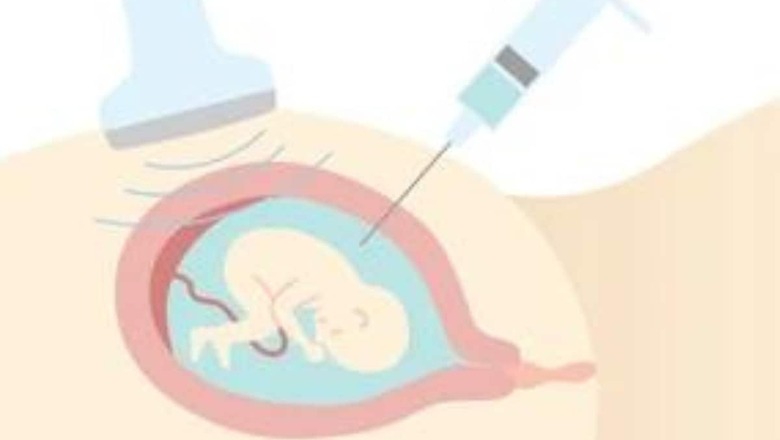
views
Children are considered a blessing. While most babies are born healthy, there are those who come to this world with debilitating defects. Babies born into families that have a history of genetic defects are at risk of inheriting various abnormalities that may cripple them for the rest of their lives. The amniocentesis test is conducted to determine whether a growing foetus has such debilitating health issues or not. In this article, we will look at the benefits and the risks associated with the test.
Benefits
The chances of foetal birth defects increase in women over 35. Amniocentesis test checks if the baby has any chromosomal abnormality, infections, brain and spine defects or genetic defects such as Down syndrome, Edwards’ syndrome, Patau’s syndrome, cystic fibrosis, sickle cell anaemia, thalassaemia, haemophilia, muscular dystrophy, and fragile X syndrome. It is also done to reduce the amount of amniotic fluid in patients suffering from polyhydramnios.
Amniocentesis is conducted by inserting a long, thin needle into the amniotic sack inside which the baby is growing. A sample of amniotic fluid is then extracted with a syringe while locating the baby’s position with an ultrasound wand to avoid injuries to it. The fluid is then tested to find out whether the child inside has a birth defect or genetic abnormality. The test usually is done at 16 to 20 weeks of pregnancy. The accuracy rate of amniocentesis as per studies is said to be about 99.4 per cent.
Risks
The risks of an amniocentesis test, in rare cases, include amniotic fluid leakage from the vagina after the procedure, vaginal bleeding, internal organ injuries or hematoma of the mother’s skin. The risks also consist of the introduction of skin bacteria into the amniotic sack, infection and fever of the mother, increased risk of pre-term labour in the third trimester, premature rupture of the amniotic sack and a 0.13 per cent chance of miscarriage.
The mother’s body may also develop antibodies to attack the fetus’s red blood cells if she is Rh-negative and her baby is Rh-positive. Another risk is the transmission of hepatitis B and HIV infection from mother to child during the procedure.



















Comments
0 comment